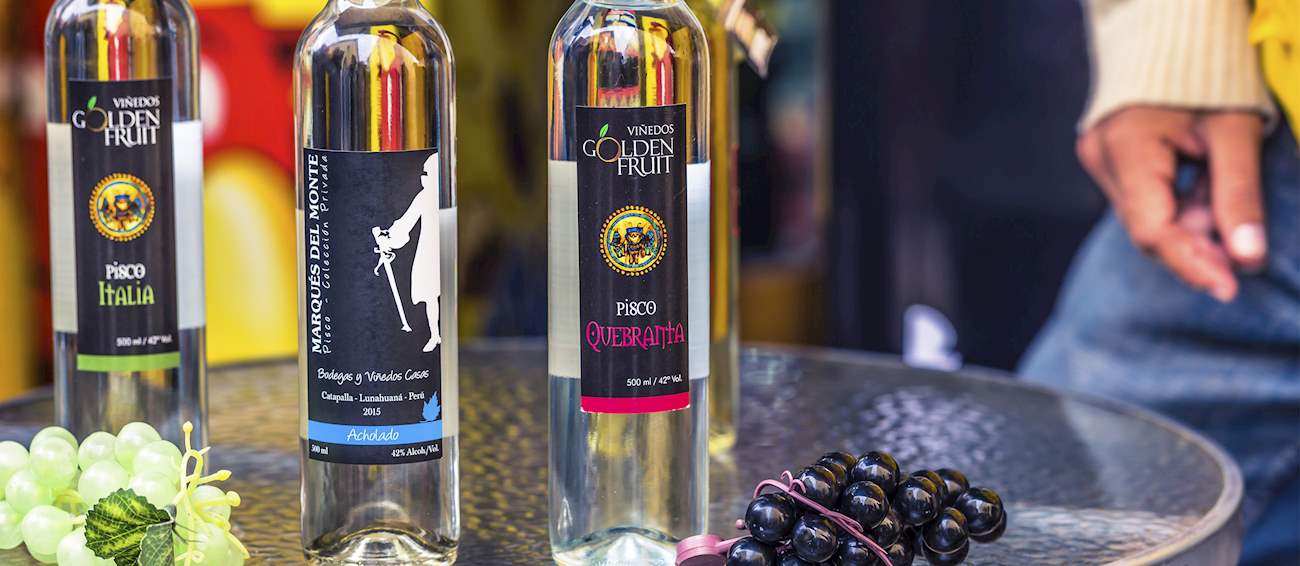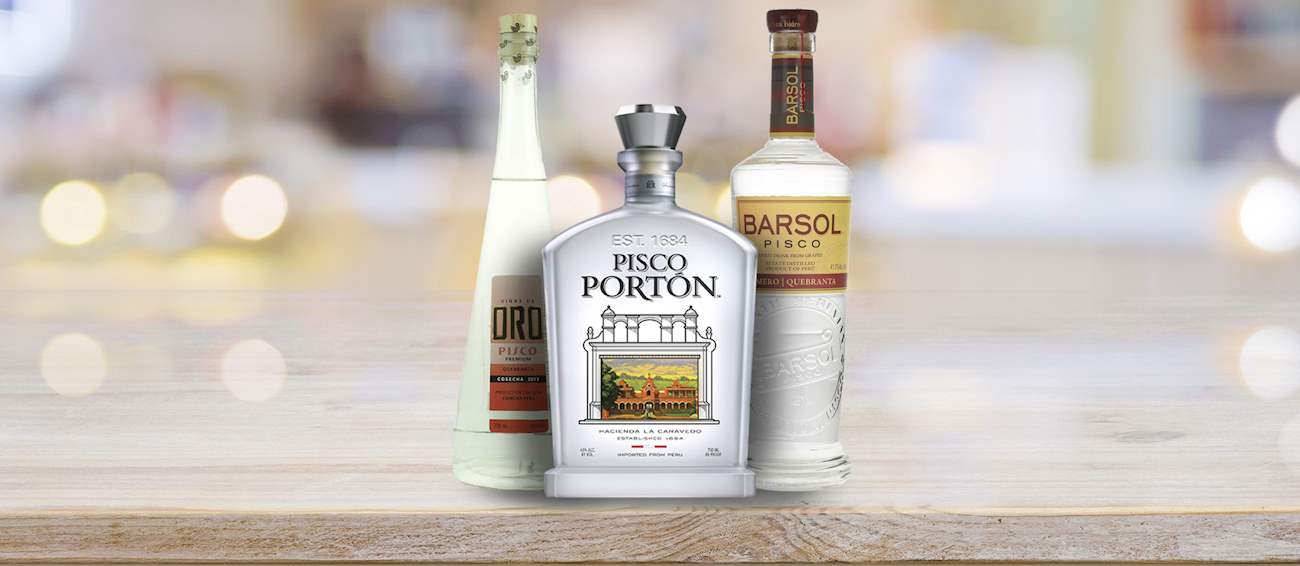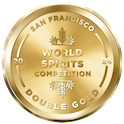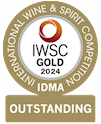Pisco is a brandy that is distilled from the fermented grape juice. It was invented in the 16th century as a replacement for orujo—an ancient Spanish pomace brandy. Although it is also produced in Chile, Peruvian pisco results in a slightly different drink due to different terroir, grapes, and techniques used in its production.
In Peru, pisco can be made with eight, mostly native grape varieties. It is distilled only once to preserve its dominant flavors while diluting and oak-aging is strictly forbidden. The drink is typically strong with dominant earthy and herbal flavors, but the character can slightly differ depending on the choice of grapes.
Pisco can be enjoyed neat, but it is often used in cocktails and mixed drinks, out of which the best known is the classic Pisco Sour. For centuries, both Chile and Peru have claimed to be the birthplace of pisco. Peruvians argue that the name and the drink hail from a port town named Pisco—a claim which was also officially supported by the European Commission when Peruvian pisco was given geographical indication in 2013. Etymological evidence also suggests Peruvian root—it is believed that the name pisco stems from Quechuan pisqu, which translates as little bird.
Despite the protection trademark, the Commission does not prohibit Chile to market and sell their drink under the same name. Interestingly, Chile is the leading producer of pisco in the world, and the biggest importer of Peruvian pisco.
Part of
Chilcano
Chilcano is a Peruvian cocktail made with a combination of pisco, lime juice, and ginger ale. The simple cocktail is prepared by combining the ingredients in ... Read more
Piscola
Piscola is a popular Chilean cocktail made with a combination of Pisco brandy and a soft drink. The soft drinks that are typically used in Piscola include cola,... Read more
Don Alfredo
Don Alfredo is a popular Peruvian cocktail made with a combination of pisco, elderflower liqueur, lime juice, and soda water. To prepare it, the first three ingredients ... Read more
El Capitán
El Capitán is a Peruvian cocktail made with a combination of Pisco, sweet vermouth, and Angostura bitters. In order to prepare it, all ingredients should ... Read more
Best Pisco
Miguel Torres
El Gobernador

Tacama
Gran Demonio Albilla

























